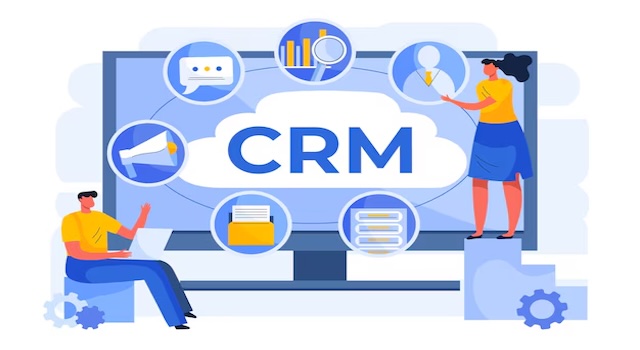CRM
Composable CRM Architecture: Building Flexible, Modular Customer Systems in the Cloud

Composable CRM is transforming how organizations architect their customer experience ecosystems. Instead of relying on a single monolithic CRM, enterprises are assembling modular, API-connected components — enabling agility, scalability, and innovation across every touchpoint in the customer journey.
What is composable CRM?
Composable CRM is a cloud-based approach where the CRM system is built from modular, interoperable components. Each module — such as sales, marketing automation, analytics, or service — is designed to work independently but connect seamlessly via APIs and event-driven architecture. This flexibility allows businesses to evolve their CRM systems quickly as customer expectations and technologies change.
Why composable CRM is the future
- Flexibility: Swap or upgrade individual CRM components without replacing the entire platform.
- Faster innovation: Integrate best-of-breed apps or AI tools quickly via microservices.
- Scalability: Add new features or regions without disrupting core systems.
- Cost control: Pay only for what’s needed — no bloated licensing.
- Resilience: Isolated modules prevent full-system downtime from single-point failures.
How composable CRM differs from traditional CRM
| Traditional CRM | Composable CRM |
|---|---|
| Single-vendor suite with fixed roadmap | Multi-vendor ecosystem of modular tools |
| Tightly coupled architecture | API-first, microservice-based architecture |
| Difficult to customize | Flexible integration and low-code extensions |
| Long upgrade cycles | Continuous innovation and iteration |
Core technologies behind composable CRM
- APIs and Webhooks: Enable real-time data flow between applications.
- Microservices: Break CRM functionality into smaller, deployable services.
- GraphQL/REST Integration Layers: Aggregate customer data across apps efficiently.
- Event-driven architecture: Trigger CRM workflows automatically based on events like “order placed” or “ticket opened.”
- Headless frontends: Separate UI from backend logic for custom digital experiences.
Composable CRM ecosystem examples
- Sales: Pipedrive or Salesforce modules integrated for pipeline management.
- Marketing: HubSpot or ActiveCampaign connected through API middleware.
- Customer service: Zendesk or Freshdesk linked via webhooks.
- Analytics: Power BI, Tableau, or Google Looker integrated for unified dashboards.
- Automation: Zapier, Workato, or MuleSoft orchestrating cross-platform workflows.
Benefits to the business
- Personalized experiences: Combine CRM, CDP, and marketing automation data for real-time personalization.
- Reduced vendor lock-in: Choose the best components for your use case instead of committing to one provider.
- Cross-department alignment: Share data easily between sales, marketing, and service teams.
- Faster go-to-market: Build, test, and launch new customer apps faster using modular systems.
Implementation roadmap
- Assess current CRM maturity: Identify pain points with integration, scalability, or usability.
- Design your CRM blueprint: Define core modules and integrations needed for your customer journey.
- Select your tech stack: Choose best-in-class apps with open APIs.
- Integrate via middleware: Use iPaaS tools like MuleSoft or Boomi for event orchestration.
- Iterate continuously: Measure performance, replace underperforming modules, and expand as needed.
KPIs for composable CRM success
- Integration uptime: Measure system reliability across services.
- Time-to-deploy new functionality: Evaluate speed of launching or swapping modules.
- Data consistency rate: Ensure unified customer data across connected systems.
- User adoption per module: Track engagement with individual CRM components.
Challenges and how to overcome them
- Data silos: Implement a unified API gateway or data lake for centralized reporting.
- Integration overhead: Automate monitoring and alerting for API connectivity.
- Governance complexity: Define ownership for each system module and enforce consistent data standards.
- Change management: Train teams to work across multiple tools seamlessly.
SEO-friendly FAQs
What is composable CRM? It’s a modular, API-based approach to CRM where different apps and services work together as a unified system.
Why adopt a composable CRM architecture? To gain flexibility, reduce vendor lock-in, and enable faster innovation through plug-and-play integrations.
Who should use composable CRM? Medium to large enterprises seeking agile digital transformation across multiple systems and geographies.
What tools support composable CRM? Salesforce, HubSpot, Zoho, and open platforms combined with iPaaS tools like MuleSoft, Workato, or Boomi.
Bottom line
Composable CRM empowers organizations to build the customer experience ecosystem they need—not the one they’re stuck with. By assembling flexible, interoperable modules, businesses can evolve at the speed of their customers and create a CRM stack that’s as dynamic as the markets they serve.






